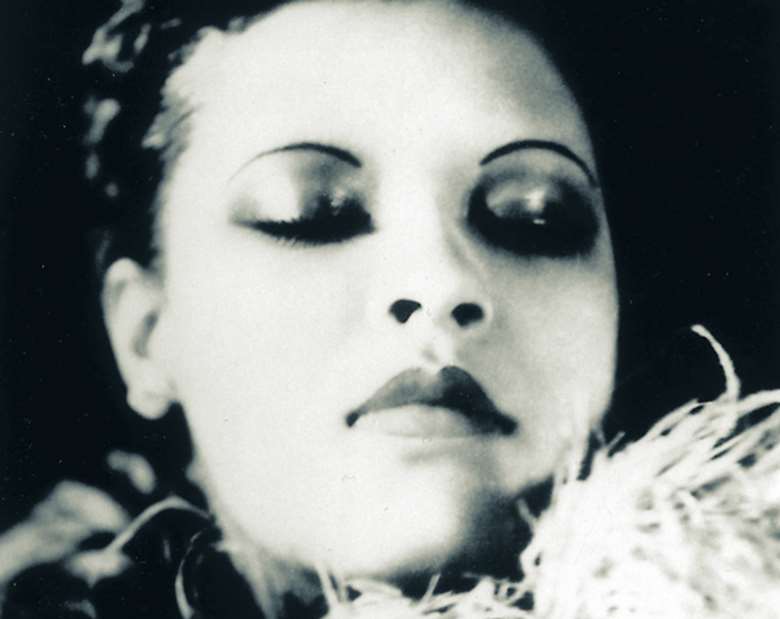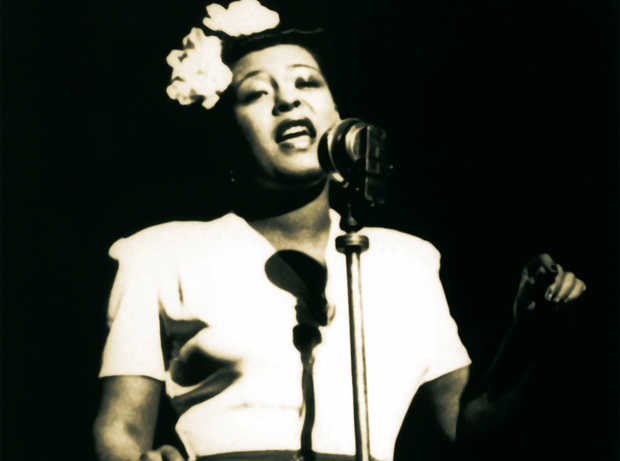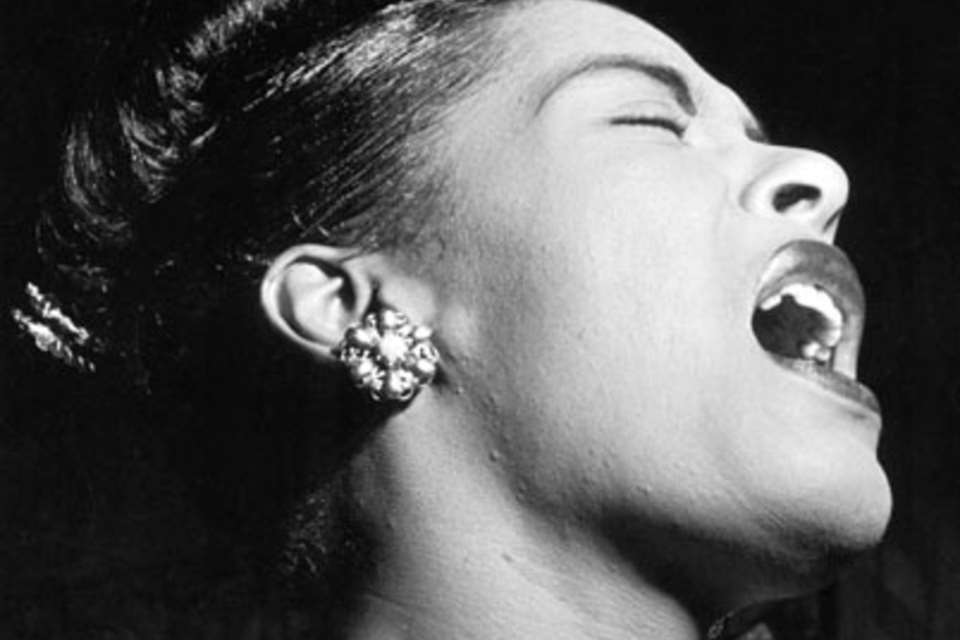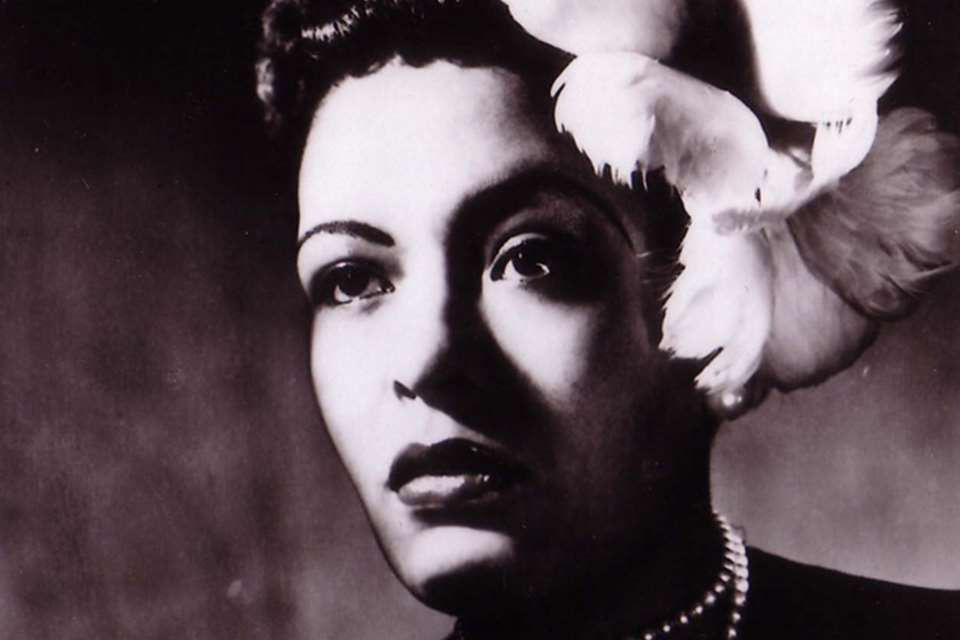Billie Holiday's ultimate triumph
Stuart Nicholson
Monday, October 11, 2021
Stuart Nicholson reflects on the enduring artistry of the singer they called Lady Day, talks about how he discovered some of the previously unknown facts he discovered researching her life and discusses the sensational conclusion he came to after his book was published

The polarities of art and life, once carefully separated by T. S. Eliot and the New Critics, collided with such violence during the 44 years of singer Billie Holiday’s life they became bonded into one immutable whole. Together they give force to the Billie Holiday legend, a legend that has grown with increasing definition since her death in 1959. Although a sense of sadness and waste provide the backdrop for her troubled yet colourful life, that life is ultimately redeemed by the joy, the passion and, in her final years, the pathos of her music.
Yet standing back from this simmering life engaged to disaster, it is impossible not to reflect that it is not so much what happens to us, as how we handle what happens us, that decides our fortune. Billie’s great rival, Ella Fitzgerald, had to endure a family background and social conditions not greatly different from Holiday’s; two years younger, Fitzgerald was almost certainly sexually abused as a child – as was Holiday – and both hung around whorehouses in early adolescence. Each was the product of a broken home, each suffered years of poverty and each stared racism square in the face in 1930s, 1940s and 1950s apartheid America. Yet Fitzgerald worked her way to Beverly Hills luxury and was still singing into the 1990s, while Holiday, who was never able to come to terms with her personal demons, died in poverty in 1959.
From her early teens Billie Holiday associated marijuana and alcohol with good times. As a young woman she lived it up with a vengeance. Yet she found it within herself to create a series of enduring jazz classics during the 1930s in the company of pianist Teddy Wilson and some of the finest jazz musicians of the day for the Brunswick label including, ‘I Wished on the Moon,’ ‘What a Little Moonlight Can Do,’ ‘I Cried for You’ and ‘This Years Kisses.’
Both with Teddy Wilson and under her own name for the Vocalion label she also created a series of recordings with Lester Young on tenor saxophone that see a degree of mutual inspiration that epitomizes jazz at its highest level of creativity – ‘Sun Showers,’ ‘I’ll Get By,’ ‘Me Myself and I,’ ‘A Sailboat in the Moonlight,’ ‘He’s Funny That Way,’ ‘When You’re Smiling,’ ‘Back In Your Own Backyard’ and ‘All of Me.’ These recordings, together with the Brunswick recordings with Wilson, available on Lady Day: The Complete Billie Holiday on Columbia 1933-1944, reveal a singer of broad emotional range able to narrow her focus at will, able to seize the pressure points of a song to reshape it so profoundly that once heard, it goes on to enjoy a second life, a life within memory; indeed many songs from this period are truly unforgettable.
Although she enjoyed success and admiration for her recording of ‘Strange Fruit’ (Billie Holiday: The Complete Commodore Recordings) that portrayed a Southern lynching, few listeners realise how Billie Holiday took the tradition of the previous generation of female blues singers and applied it to the American Popular Song. By careful selection of material, she sung these songs in a way the invoked a blues mood on non-blues material. Bessie Smith, a special childhood favourite, sang in the first person about sex, infidelity and broken relationships. Billie carefully chose popular songs with lyric content that dealt with similar issues. In effect, she created a character part for herself that evolved directly out of the blues tradition, without being a blues singer per se herself.
The “character” she chose to portray was a woman unlucky in love and whose life’s experiences appeared to be mirrored in the text of her songs. Even when singing in the big bands of Count Basie and Artie Shaw, she refused to sing songs that did not conform to the role she created for herself. Frequently she sang “I” songs, addressed to “you,” but changed the “I” from positive to negative: ‘I Cover the Waterfront,’ ‘The Man I Love,’ ‘I Can’t Get Started,’ ‘My Old Flame,’ ‘I’ll Get By’ and so on. Indeed, Artie Shaw, as he pointed out to me, was well aware of the role Holiday was creating for herself, and wrote ‘Any Old Time’ for her when she joined his band – “Any old time you want me, I’ll be there…” In the 1940s she created a series of enduring classics for the Decca label that included ‘Lover Man,’ ‘Good Morning Heartache,’ and ‘That Old Devil Called Love,’ the latter two also specially written for her to frame her character part (Billie Holiday: The Complete Original Decca Recordings).
Through the mediation of her “character” part with the songs she sang, audiences gradually began to read her real-life history into her performances. In the late-1940s when she never seemed far from the clamour of the tabloid headlines, she chose songs that interacted with her real-life image, such as “Tain’t Nobody’s Business If I Do.” Recorded a year after she was released from prison for a drugs conviction, it triumphantly reinforced her “notoriety” while defiantly justifying her indulgence of the self. As her voice deteriorated in the 1950s, it paradoxically became the source of her authenticity on albums for Norman Granz’s Clef and Verve labels (Billie Holiday: The Complete Verve Studio Master Takes), and on the album Lady In Satin (Columbia/Legacy), where the dues she had paid, the wrong associations she had made and the collapse of a promising career all seemed to be refracted in the flaws of her latter day voice.
Even today the way her image interacts with her music remains the least understood aspect of her art. When in November 1956 she performed a concert alternating readings from her autobiography Lady Sings the Blues, ghost written by William F. Dufty, with songs that had become associated with her, she was consciously erecting the legend into which she would finally step, closing the doors behind her, on 15 July, 1959. Yet the essential truth about Billie Holiday is that she was a great artist, not because of her hedonistic and much publicised lifestyle, but in spite of it.
Because the image of Billie Holiday-as-all-purpose-victim, part romantic martyr and part heroine of excess has gradually tended to overwhelm her artistry, in 1992 I set out on a two year odyssey to try and discover the real Billie Holiday. As a member of a deprived minority of American society struggling to make ends meet during the formative years of the twentieth century, tracking her down her early years proved a challenge. Even so, everybody, at some point, comes in touch with the system, and in the 1920 US census the five year-old Billie, then known as Eleanora Harris, was with her mother Sadie (or Sarah) in the household of Robert Miller and Eva Miller.
The relationship of Sadie to the head of the household, a standard census requirement, showed her to be a sister-in-law, which meant Robert and Eva’s children, Charlie and Dorothy, were Eleanora’s cousins. This was confirmed in a TV interview Billie gave in 1956, where she refers by name to Charlie and Dorothy in an anecdote about growing up. The Baltimore City Schools Record Retrieval Office gave me the dates when she started her education and where. Then, on checking a 1938 interview Billie gave to Melody Maker’s Leonard Feather, both Billie and Sadie both confirmed she was born in Philadelphia. This corresponded with an interview she gave the following year to New York Amsterdam News, the leading Harlem newspaper.
A copy of Billie’s birth certificate and later her passport details both gave Philadelphia as her place of birth, so there can be no question where Billie was born. Within a few weeks I had discovered that all the history books that gave Baltimore as her place of birth were wrong.

The next problem was Billie’s own assertion she was admitted to The House of Good Shepherd, a Catholic run house of correction for “wayward girls.” After much initial reluctance, they finally faxed me all they had in their file. It confirmed Billie had been admitted to their institution not once, but twice. The first time was on 5 January 1925 for bunking off school. The second time was 24 December 1926 as a state witness for the prosecution in her own rape! The name of the correspondent was given, a Wilbert Rich. A search of the Baltimore archives produced his trial papers – the trial was on 18 January 1927 and he received a three month sentence for the crime.
This was an important find, since most people had written Billie’s autobiography Lady Sings The Blues off as a self serving, grossly exaggerated account of her life. One biographer even dismissed Billie’s claim to have been raped as a child as “a metaphor for her relationship with men.” But here in front of me was the official documentation that proved her claims were right.
At the end of 1928 Sadie and Billie tried her luck in Harlem (Billie says 1927 in Lady Sings The Blues). Billie claims in her autobiography to have been imprisoned for prostitution. Several days research in New York’s City Hall records office yielded the Court Records for the Women’s Night Court of Friday, 3 May 1929 that proved Billie was arrested on a prostitution rap. In the top left hand corner was stamped “Jean H. Norris” the judge presiding – Billie actually refers to her in her autobiography. From there her records were easy to trace confirming her subsequent incarceration on Welfare, or Rikers Island. Billie was just 14-years-old.
Lady Sings the Blues was right again. Yet after this traumatic upbringing, after being raped as an 11 year-old and institutionalised three times, her talent as a singer somehow grew to the extent that just three years later, as a 17-year-old, she was making her recording debut under John Hammond’s supervision with Benny Goodman.
Under the Freedom of Information Act, I obtained Billie’s complete prison file from Alderton where she was incarcerated following her infamous drugs bust in 1947. It included a list of people who wrote to her, including her cousins, Charles and Dorothy. Charles was then a sergeant in the army. Anyone in present or past employment of the US Government will, as of right, have any correspondence forwarded on to them. I wrote the usual letter explaining my project, but heard nothing for over a year.
Then, six weeks before my deadline, Charlie’s wife phoned. Charlie had died seven months ago, she said, and she couldn’t remember anything Charlie had told her about Billie, and yes, Charlie was Billie’s cousin, but she was his third wife and hadn’t been around during Billie’s lifetime. It seemed I had drawn a blank.
“Anyway,” she added, “you don’t want to be talking to me, you should be talking to Evelyn, who knew Billie as a child.” She gave me Evelyn Conway’s telephone number. Evelyn (neé Miller) was the only child of Robert Miller’s first marriage. Evelyn was 88, but clear and lucid. When she was 11, she said, Robert Miller went to Philadelphia to pick up the babe-in-arms Eleanora from his sister-in-law Sadie (by his second marriage) and brought her into the household where she was living with her Grandmother (Robert’s mother). This was the household where Evelyn and Billie were brought up.
Since I was the only person who knew Billie was born in Philadelphia at this point, this woman was clearly the real thing. And more to the point, here was further confirmation Billie was born in Philly. This was the older “cousin” referred to as Ida in Lady Sings the Blues. Evelyn explained the whole story as she remembered of Billie’s childhood, and her daughter Janice (whose middle name is Eleanora after Billie), gave me her reminiscences of Billie, so filling in vital, first hand information about Billie’s early years. Both Evelyn and her husband Matthew remembered Clarence Holiday, Billie’s father, for example.
The prison file also included one small document that had a massive bearing on Billie’s career. It was a letter under the signature of E. Fred Sweet, Chief Probation Officer, and Violet A. Jersawit, Probation Officer, both of New York’s Probation Service, who interviewed Joe Glaser, Billie’s (and Louis Armstrong’s) manager, to help compile a profile and social history of Billie at the request of Alderton to aid in her treatment for addiction. In it they wrote, “Mr. Glaser states that he cooperated with the Federal Narcotic Agents as he had no recourse except to have her forced to take proper treatment [for drug addiction].”
Incredibly, Billie’s 1947 drug bust was done with the connivance of Billie’s own manager. I obtained the trial papers for Billie and her then boyfriend and co-addict and trumpeter Joe Guy (two separate trials, by the way). The papers make clear it was at the instigation of Glaser, the one person she thought she could trust in her plight, that Billie waived her legal defence.
“Any half competent lawyer could have got her off the charge, but she was not given the opportunity because Glaser had told her to plead guilty”
After performing at the Earle Theatre in Philadelphia, Billie had been driven back to the Attucks Hotel. According to the testimony of Agent Roter, Billie dropped off her accompanist and assistant, and with her chauffeur drove off, a statement that is crucial. The agents went to Room 7 that had been occupied by Billie with the accompanist and assistant (who had returned to collect Billie’s luggage) and the agents found drugs and drug impedimenta. Billie was subsequently arrested in New York for possession. The key element here is that there was nothing to connect Billie to the drugs found in her hotel, they may have been hers, but she was not in possession of them, as required by law. Any half competent lawyer could have got her off the charge, but she was not given the opportunity because Glaser had told her to plead guilty.
It is interesting to contrast Billie’s fortunes with that of Joe Guy, who had made his way back to New York from the Attucks earlier that day. He too was arrested, but he was represented in court. Despite confessing to have shot up drugs just before his arrest in New York, his testimony was set aside because it was not relevant to events in Philadelphia. His charges were dropped because, of course, there was nothing to connect him to the drugs in the Attucks Hotel since he, like Billie, was not there at the time.
This episode was crucial in Billie’s career because having served a sentence for a year and a day she was unable to secure a Cabaret Card so vital for playing the New York clubs. She could play Carnegie Hall and the big New York stages, but her day to day living in the New York jazz clubs was shut down. “The Queen of 52nd Street,” as she was known in the 1940s, was no more. She had to find club work outside New York where the Cabaret Card rule did not apply. Like Wagner’s Flying Dutchman, she could never return to her home port, and was doomed to playing the smaller clubs outside New York for the rest of her life (she called it “My years of exile” in Lady Sings the Blues). Without a New York profile, her price began to slide, and so did her career, and so too the cycle of drugs and alcohol.
In Billie’s final years, she was married to Louis McKay, who never gave an interview about Billie, even though he acted as consultant for the feature film Lady Sings the Blues, starring Diana Ross. But he did make a court testimony under oath just after Billie’s death. I was able to obtain a transcript of this from New York’s Surrogate’s Court and here we get an insight into his relationship with his former wife. In it he alleged Billie’s then lawyer Earle Zaidins was responsible for putting her back on drugs and claimed to have discovered him in an act of sodomy with Billie when she was high on drugs. The important thing about this interview is that it is one thing to make sensational claims, but it is quite another to do so standing up in open court under oath.
Should we believe this testimony? I had the good fortune to meet with the lawyer representing McKay at the time (and who had also represented Billie from time to time while she was alive), Florence Kennedy. Flo was not just any lawyer. She was a formidable black lady who stood some six foot high, and had an impeccable record in Civil Rights and frequently lectured on the subject in America’s Ivy League Universities. Flo allowed me to go through her old files relating to Billie Holiday, and over lunch said that contrary to how Billie’s other men had been portrayed, McKay worked hard on Billie’s behalf to resurrect her flagging career and keep her off drugs. Billie loved him and he loved her. She said he was “kind of compassionate” to Billie, but conceded he was “streetwise and a pimp.” But she did believe him when he made those remarkable allegations in open court, adding, “What’s more, I still do.”
Billie Holiday’s final years were spent in extreme poverty. She was reduced to going to her manager Joe Glaser for handouts against future earnings. I have a copy of a pathetic IOU, signed in Billie’s very shaky hand, and dated 2 June 1958. It reads: “This will acknowledge the fact that I have received from you [Glaser] the following amount of money – $50 cash, $135 for my rent, $50 for my current necessities amounting to $235 in addition to other monies owed to you per signed receipts.” When she died on 15 July 1959, her manager Joe Glaser made great play of the fact he paid for her funeral and hospital expenses in the press reports of the funeral. What was not known until I pulled file A1859 from New York’s Surrogate’s Court was that Glaser immediately claimed back these expenses from Billie Holiday’s Estate.
“Many of the personality problems she grappled with through her life could indeed have had their roots in her traumatic childhood”
Billie Holiday’s career was not the shooting-star ride to success it is often portrayed. She had a huge talent, but her temperament frequently stood in her way. As Evelyn told me: “Sadie left her all the time and that was the problem, the child had an attitude, I guess from being abandoned.” Many of the personality problems she grappled with through her life could indeed have had their roots in her traumatic childhood. Being constantly abandoned to friends and relations and the emotional havoc wrought by her rape as an 11-year-old could well have contributed to the diminished sense of self that those close to her spoke of. This feeling of rejection would also go some way to explaining her abnormally dependent personality, her desire to attach herself to someone who would love and care for her, and then once in a relationship, do anything and accept anything to maintain it.
Equally, the absence of parental supervision in her formative years might have had a bearing on her moral discipline, expressed at an early age through truancy and lack of interest in academic activities. Yet such calm, after the fact rationalisation can never fully explain the dark and destructive forces that inhabit human nature. Looking back on a life with so many wrong turnings, wrong associations, seemingly inexplicable behaviour and a failure to take responsibility for a career that once showed such great promise, a pattern emerges.
Billie Holiday was a loyal person, but was often highly impulsive. Yet she felt little or no guilt or regret for her actions or their consequences, either to herself or to those associated with her. It is difficult at this distance to determine precisely why she acted as she did; frequently it seemed as the result of some trivial whim. Her outward appearance of loyalty, pride and sincerity seems to have concealed a deficiency that led her to being incapable of remorse or any desire to avoid damaging or destructive behaviour. As her biographer, I have spent considerable time studying the circumstances of this woman’s troubled life.
After my book was published in the UK, the USA and Japan, I looked again at her life as a whole, and the picture that emerged was of someone who may well have suffered from a psychopathic personality disorder. Many of the characteristics of such a disorder are present: irresponsibility when important issues are at stake; the absence of any remorse or shame; an inability to learn from experience or to follow any consistent life plan. When viewed in terms of months and years, these traits reveal themselves as a recurring pattern and, as a layman (albeit guided by some unofficial expert medical help and many discussions with Norman Granz, who founded Verve records and knew her well), I found myself strongly drawn to the conclusion that Billie Holiday’s life may indeed have been cursed by what psychiatrist Robert Lindner has called the “most destructive of all forms of aberrant behaviour.”
This disorder was only beginning to be understood in the late 1940s and was barely recognised during Billie’s lifetime. Therein may possibly lie the greatest tragedy of Billie Holiday, that she may have been struggling with a destructive mental disorder that neither she nor anyone around her could comprehend. Perhaps the extreme contradictions to be found in her character created the tensions that gave rise to her genius. That she was able to achieve so much with the burdens she had to carry must surely be her ultimate triumph.
This article appeared in the December 2005 issue of Jazzwise. Never miss an issue – subscribe today


